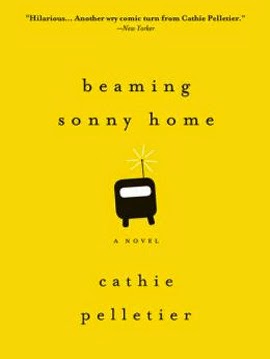As the character study of an unreliable narrator, The Forgers by Bradford Morrow presents a slow burn suspense that relies on unease over mystery, atmosphere over action. It opens with the murder of a reclusive rare book collector named Adam Diehl — the scene of the crime described by the narrator about four days after the fact.
Diehl was found clinging to life on the floor of his home in Montauk, surrounded by valuable books, original manuscripts, and inscribed literature. Most of it has been destroyed, but that fact isn't the most striking detail about the crime. Diehl was found without his hands. They had been cut off.
Astonishingly plausible insights into rare books and expert forgeries.
The narrator, only named Will once in the entire book, learned about the horrid incident from Diehl's sister and his girlfriend Meghan. He immediately offered to meet her at the hospital, a proposition she appreciated since the two men didn't like each other much.
The mutual dislike between them (or more accurately mistrust) fell squarely on Will's shoulders. He had once unashamedly and triumphantly been a forger. When he was caught, everyone who had trusted him with the utmost confidence to appraise certain books (Conan Doyle especially) were now questioned for having unknowingly passed along fakes and forgeries. Diehl was one of them, sort of.
Adding "sort of" is to suffice that he was not like many of the other victims because Diehl, like his future brother-in-law Will, was a practiced forger too. The only difference is that Diehl had never been caught until, or so it seemed, his grizzly murder. Will, on the other hand, had been caught.
As a character who possesses the ability to simultaneously prove his honesty and duplicity in the same paragraph, Morrow keeps his readers teetering between his guilt or innocence. At the same time, the author takes readers into the insular world of rare books and the compulsion to forge masterworks.
A few more graphs about author Bradford Morrow.
Although born in Baltimore, Bradford Morrow grew up in Denver before traveling the world. He traveled through Honduras as a medical volunteer. He attended a foreign exchange program in Cuneo, Italy. He took time off from his studies to live in Paris for a year.
It was these experiences and his graduate work at Yale that informed his early work. After working as a bookseller in Santa Barbara and founding the literary journal Conjunctions in New York City, Morrow started writing novels and joined the faculty at Bard College in 1990, where he is a professor of literature and a Bard Center Fellow.
Since, Morrow has taught creative writing at Brown, Columbia, and Princeton Universities, as well as the Naropa Institute. He is currently divides his time between New York City and upstate New York while working on his eighth novel, The Prague Sonata.
The Forgers By Bradford Morrow Fakes 6.8 On The Liquid Hip Richter Scale.
The writing is exceptional and the character study admirable. The real shortcoming is the story's inability to capitalize on its most thrilling moments, which is a by-product of being told through the eyes of an arrogant and manipulative protagonist who is rarely willing to admit he is not in control. In sum, it's the novel's greatest strength — an acutely over analytic protagonist — that is also the novel's biggest weakness.
You can find The Forgers by Bradford Marrow on Amazon or download the novel for iBooks. The audiobook is narrated by R.C. Bray who lends a convincing tone to the novel, delivering the story with a conviction as convincing as the prose. For more Bradford Marrow titles, visit independent bookseller Alibris.
![Liquid [Hip]](https://blogger.googleusercontent.com/img/b/R29vZ2xl/AVvXsEjAFBQPqS7J0-rrttNoRYSsuwIePPZf4Nq6sqDioK1zzVQXJIQXKzq_NVNI4n6h3inuRQFBKOcJeZeSufkdHHIOxbSWyBjTjTxgKEQGyPzdwvkEEeECh4bI5YEGk4RWGUINSd7vulPQsCA/s1600-r/liquidhip.jpg)












